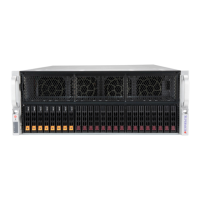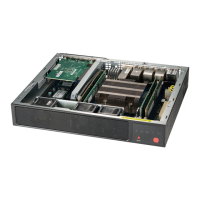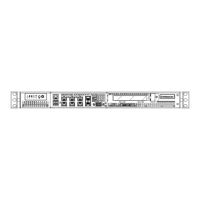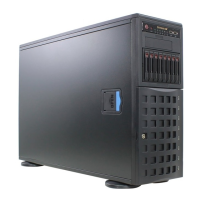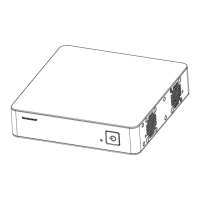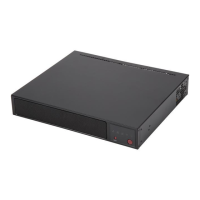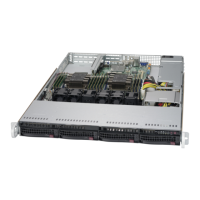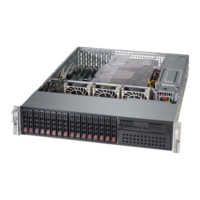Do you have a question about the Supermicro SuperServer 4029GP-TRT and is the answer not in the manual?
Provides a brief outline of the system's functions and features.
Instructions for inspecting and preparing the system for installation.
Overview of the server's technical specifications and capabilities.
Details on the physical components and indicators on the server chassis.
Diagram and descriptions of motherboard components, jumpers, and connectors.
Introduction to mounting the system in a server rack.
Guidelines for choosing a location and rack precautions.
Step-by-step instructions for installing the chassis into a rack.
Procedure to safely remove power from the system before maintenance.
Steps for opening the chassis to access internal components.
Detailed guide for installing CPU and heatsink modules.
Information on installing and managing hard drives and other chassis parts.
Instructions and precautions for installing memory modules (DIMMs).
Steps for installing expansion cards into PCI-E slots.
Procedure for replacing the onboard motherboard battery.
Guide for replacing system cooling fans.
Information on replacing hot-plug power supply modules.
Notes on routing and reconnecting data cables.
Details on connecting power to the motherboard and GPU.
Descriptions of buttons and LEDs on the front control panel.
Overview of rear I/O ports and motherboard connectors.
Details on SATA and M.2 slot connections.
Descriptions of fan, TPM, and RAID key headers.
Explanation of jumper functions and settings.
Information on status LEDs for LAN, BMC, and power.
Guide for installing Windows OS, including RAID configuration.
Instructions for downloading and installing system drivers.
Overview of the SuperDoctor 5 monitoring utility.
Information on configuring Intelligent Platform Management Interface (IPMI) settings.
Description of the UEFI BIOS setup utility and navigation.
Explanation of the Main BIOS setup screen options.
Detailed configuration options for various system settings.
Configuration options for SMBIOS event logging.
IPMI configuration settings, including SEL and network setup.
Options for setting passwords, secure boot, and key management.
Configuration for boot mode, priorities, and new boot options.
Options for saving changes, restoring defaults, and exiting BIOS setup.
Lists beep codes and their corresponding error messages.
Information on additional checkpoint codes for troubleshooting.
General introduction to industry standard safety warnings.
Warning regarding the building's protection device rating.
Crucial warning about disconnecting all power sources before servicing.
Warning that only trained personnel should install or service equipment.
Warning regarding installation in restricted access areas.
Warning about the danger of explosion if batteries are replaced incorrectly.
Warning about de-energizing the unit by removing all power connections.
Warning about hazardous voltage on the backplane during operation.
Requirement to follow local and national electrical codes.
Warning about proper disposal according to laws and regulations.
Warning about hazardous moving parts in hot-swap fans.
Warning about using only specified cables and adapters to prevent malfunction or fire.
Details on supported CPU types and socket.
Information on the motherboard chipset.
BIOS specifications.
Details on memory support, capacity, and speed.
Information on the on-chip SATA controller.
Number and type of supported drive bays.
Number of PCI-E slots available.
Specifications of the motherboard model.
Specifications of the server chassis model and dimensions.
Information on the cooling fan system.
Details on the power supply model and specifications.
Specifications for operating and non-operating temperatures and humidity.
Summary of electromagnetic emissions, immunity, safety, and environmental compliance.
Introduction to UEFI and its role in system boot.
Procedures for recovering the BIOS image if corrupted.
Method for BIOS recovery using a USB device.
| Form Factor | 4U Rackmount |
|---|---|
| Chipset | Intel C621 |
| Processor | Intel Xeon Scalable processors |
| Memory | Up to 3TB DDR4 |
| Expansion Slots | 7 PCI-E 3.0 x16 slots |
| Networking | Dual 10GBase-T LAN |
| Management | IPMI 2.0 with KVM and Dedicated LAN |
| Operating System Support | Windows Server, Linux |
